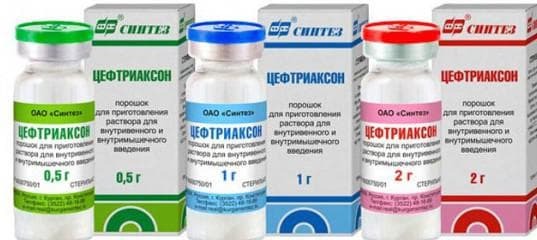
It is hardly possible to find a person who has not had a disease of the mucous membrane of the pharynx at least once in his life. Angina, laryngitis, pharyngitis - these dangers lie in wait for us at any time of the year, most manifesting themselves in epidemic periods. But there are situations when the disease after treatment returns again and again, gradually acquiring a chronic character. This is also the case with subatrophic pharyngitis - an ailment that causes a lot of inconvenience to the patient. In this article we will talk about what symptoms the disease manifests and how to tame it.
Contents
- 1 What is
- 2 What is
- 2 What is
- 3 What is
- 4 ?
- 4 ?
- 5 ?
What is

? A pharyngitis in medicine is a process in which the back wall of the larynx dries up, becomes dry crusts, causing the patient to have a constant lump in the throat, dry cough andconstant persecution. Patients are also concerned about the difficulties accompanying the process of eating - the throat starts to ache and the food is more difficult to swallow than usual, because the amount of secret secretion decreases. Photos, symptoms and treatment of pharyngitis can be viewed here.
The disease is not always accompanied by an increase in temperature, and therefore the patient may have a deceptive feeling of not seriousness of what is happening. But pharyngitis is cunning. If you do not notice it in time, it can after some time go into a chronic subatrophic form, which is almost impossible to get rid of. The treatment of the acute form of pharyngitis is described in detail here.

Read how to cure a runny nose when breastfeeding.
Causes of congestion of mucus in the nasopharynx: http: //prolor.ru/n/simptomy/ sliz-v-nosoglotke-prichiny.html.
Here are the symptoms of polyps in the nose.
What causes complications? The provoking factors include:
- work on a dusty or chemical vapor-intensive production;
- untreated acute pharyngitis;
- prolonged inflammation of the maxillary sinuses;
- prolonged and uncontrolled use of vasoconstrictive drops for the nose( getting into the larynx, they flow down its back wall and affect the mucous membrane);
- diseases associated with metabolic disorders( diabetes, diathesis, pancreas problems);
- unhealthy lifestyle - abuse of tobacco and alcohol products, living in ecologically polluted regions;
- diseases of the cardiovascular system, organs of the genitourinary system, gastrointestinal tract( gastritis, cholecystitis, pancreatitis);
- inappropriate climate in the place of residence.
In the video - more information about subatrophic pharyngitis:
The word "subatrophic" means that this form of pharyngitis precedes the most severe - atrophic. It is characterized by a condition preceding the complete loss of functions of the mucous membrane of the larynx, its thinning, gradual atrophy.
Clinical picture of

Subatrophic pharyngitis is accompanied by abundant mucus formation of increased viscosity and density. Drying on the back of the pharynx, it forms a hard crust, which causes the patient's anxiety and a constant sense of the presence of a foreign body in the throat.
Constant irritation of the larynx provokes a dry, unproductive cough with which the patient tries to get rid of the interfering lump. The patient becomes nervous, does not sleep well, begins to suffer from distracted attention and disability. Fighting the crusts is problematic - they can be removed mechanically, but this procedure is not very popular, as it causes a gag reflex.
Pharyngoscopy shows a pale, dry mucous( unhealthily shiny as if it was opened with a varnish), through which an abnormally vivid picture of the thickened blood vessels is visible. To confirm the diagnosis, an otolaryngologist can prescribe a swab analysis from the pharynx, and, depending on the presence of concomitant diseases, additional examinations - a computer tomography of the maxillary sinuses, an x-ray of the digestive tract, an electrocardiogram.
Treatment of
Modern medicine believes that it is impossible to cure subatrophic pharyngitis, therefore, all measures are aimed at alleviating the general condition of the patient and stopping atrophic processes.
Before prescribing the treatment, the physician, with the help of a detailed examination of the patient's organism, establishes the causes of its occurrence and gives recommendations concerning their elimination. They can be very radical - up to a change in climate, work, way of life, but they will have to be carried out as far as possible in order to avoid the progression of the disease.
If the cause for pharyngitis caused other diseases, the treatment will be constructed in such a way as to simultaneously eliminate both the cause and the effect. Among the most common factors doctors call sinusitis, which greatly complicates nasal breathing. As a result, the person involuntarily begins to breathe through the nose, and this leads to an additional desiccation of the mucous membrane of the throat and aggravation of the symptoms of subatrophic pharyngitis.
To eliminate this problem, the patient is prescribed antibiotics. The names of antibiotics for the treatment of adult pharyngitis are listed in the list:
- Amoxicillin,

- Augmentin,
- Flemoclave solute,
- Ceftriaxone

and frequent rinsing of the nose with sea salt solution( 0.5-1 teaspoon per 200 ml of water).Bury the nose will have natural means - diluted 1: 1 with water, aloe juice, decoction of chamomile or homeopathic drops( Euforbium compositum), as vasoconstrictor drugs complicate the course of the disease.
Regarding symptomatic treatment, the main emphasis is on moisturizing and softening the mucous membrane of the larynx .With this, the solutions of Lugol and Furatsilin( often use furatsilin with purulent angina), oils( sea buckthorn, dog rose, peach, aloe vera oil), rinses with herbs( chamomile, sage, mother-and-stepmother), inhalation are excellent.
Food
As a mandatory item of complex treatment, a patient is prescribed a diet. From the usual menu it is necessary to exclude:
- tomato, orange, grapefruit juices;
- fried, sharp, smoked, overly salty dishes;
- hot and cold food, ice cream, chilled drinks.
Tobacco smoking is also prohibited - cigarette smoke, like nothing else, irritates and overdoes the larynx, which negates all medical measures aimed at eliminating pharyngitis.
The patient needs to saturate his diet with foods rich in vitamins, especially in groups B and C. Daily seasonal fruits( grapes, apples, bananas, pears, plums, persimmons, pomegranates) should be present in the menu;
- ;

- vegetables( cabbage, beets, carrots, fresh or dried herbs, potatoes, tomatoes);
- dried fruits( dried apricots, prunes, raisins, figs) and decoctions of them;
- meat and fish cooked in a delicate way( steaming, stewing, baking);
- the first dishes - meat and fish soups, vegetable and chicken broths;
- legumes( chickpeas, lentils, kidney beans, peas);
- sour-milk products;
- cereals( buckwheat, oatmeal, pearl barley);
- vitamin drinks( fruit drinks, tea with lemon, raspberry, honey, kalina);
- infusions of medicinal herbs( plantain, linden, chamomile, St. John's wort).

Of great importance is the regime and form of eating. Products recommended to use well-cooked( baked, stewed) or grinded, solid fresh fruit should be properly chewed. The patient is best to switch to a split meal, including five meals - a hearty breakfast, a small vitamin snack after 2-3 hours, lunch and afternoon snack in the afternoon and dinner. The main goal of the diet is the saturation of the body with vitamins and protection of the mucosa from trauma.
It is important to moisten the room, especially before going to bed and during the heating season, to avoid dusty, cold, gas contaminated rooms damaged by the fungus.
Preventive measures
Because subatrophic pharyngitis is a disease that is easier to prevent than cured, I would like to focus on methods for preventing it. To keep the larynx of the larynx healthy and functional, it is enough for everyone( and especially for those who fall into the risk group) to follow simple recommendations:
- not to start nasopharyngeal diseases and not wait for the rhinitis to pass by itself, and in its treatment try to use the most natural natural preparations andfolk recipes;
- to breathe through the nose, and if this causes problems, water the nasal passages with preventive sprays( Salin, Aquamaris, Marimer);
- in the cold season avoid prolonged conversations on the street;
- maintain the humidity of the room at a level of at least 60%;
- without fail to treat foci of chronic infection: caries, cystitis, pyelonephritis, sinusitis;
- monitor your health and at least once every two years undergo a comprehensive examination, paying special attention to the thyroid and pancreas;
- every six months to take a general blood test to control the level of hemoglobin: anemia refers to one of the factors causing chronic pharyngitis;
- to strengthen immunity with the help of multivitamin complexes, immunomodulators, hardening;try to ensure that the food was saturated with vitamins and trace elements( iodine, zinc, magnesium, calcium);
- a lot of time to spend in the fresh air, walk in parks, in summer, whenever possible to travel to the sea - saturated with iodine vapor air is an excellent prevention of diseases of the upper respiratory tract;
- say goodbye to cigarettes forever, use alcohol sparingly.
The video tells about the prevention of pharyngitis:
Scrupulous compliance with these tips will help even those who have already managed to reduce an unpleasant familiarity with pharyngitis, significantly improve the quality of life and minimize the symptomatic manifestations of the disease. Here you can read reviews of how to treat pharyngitis. The link describes chronic granulosa pharyngitis.
